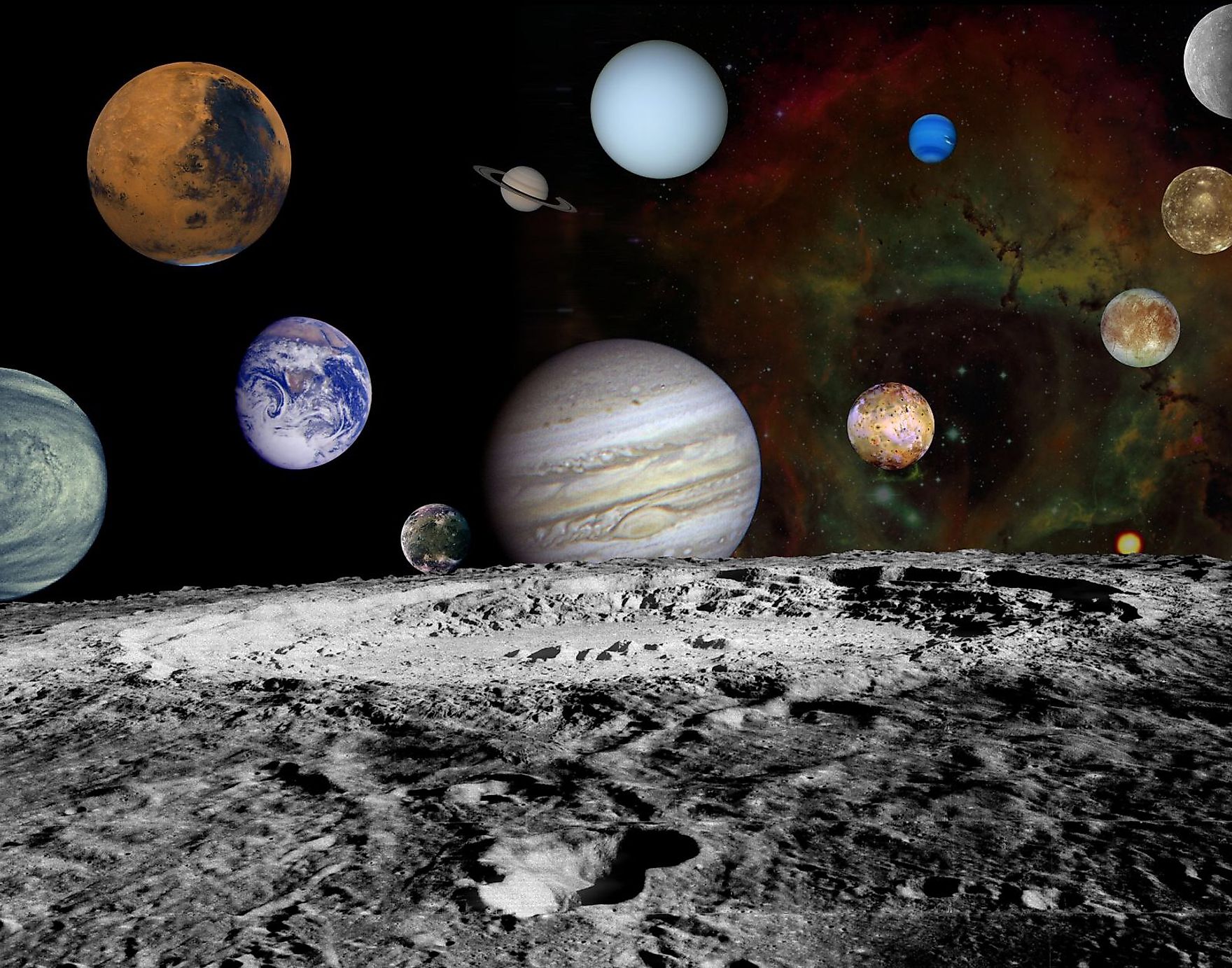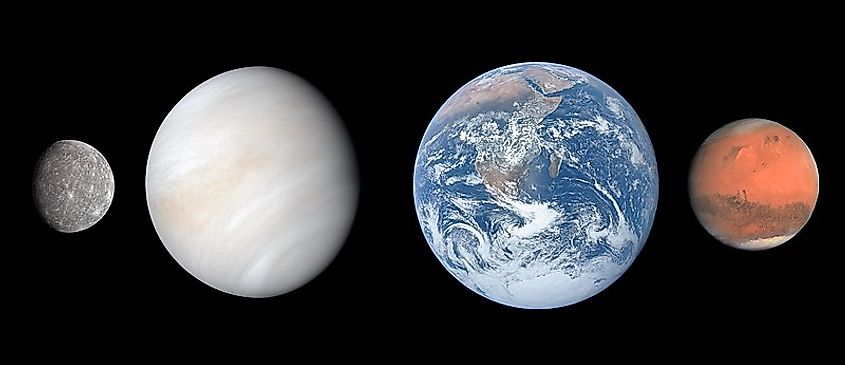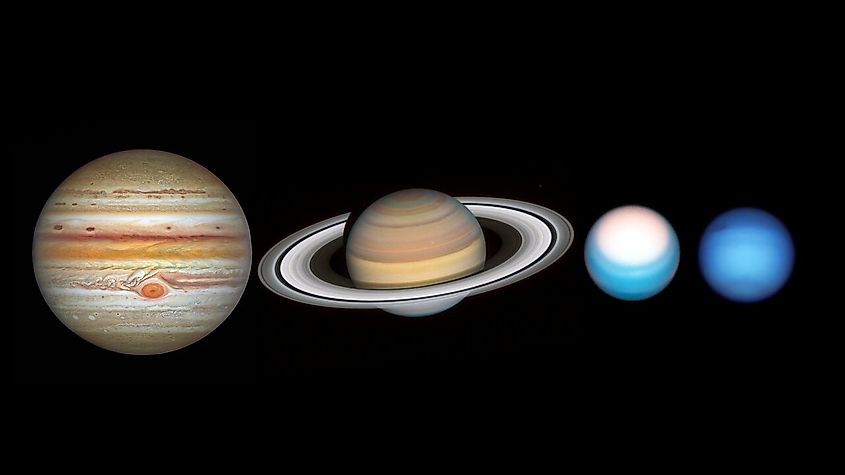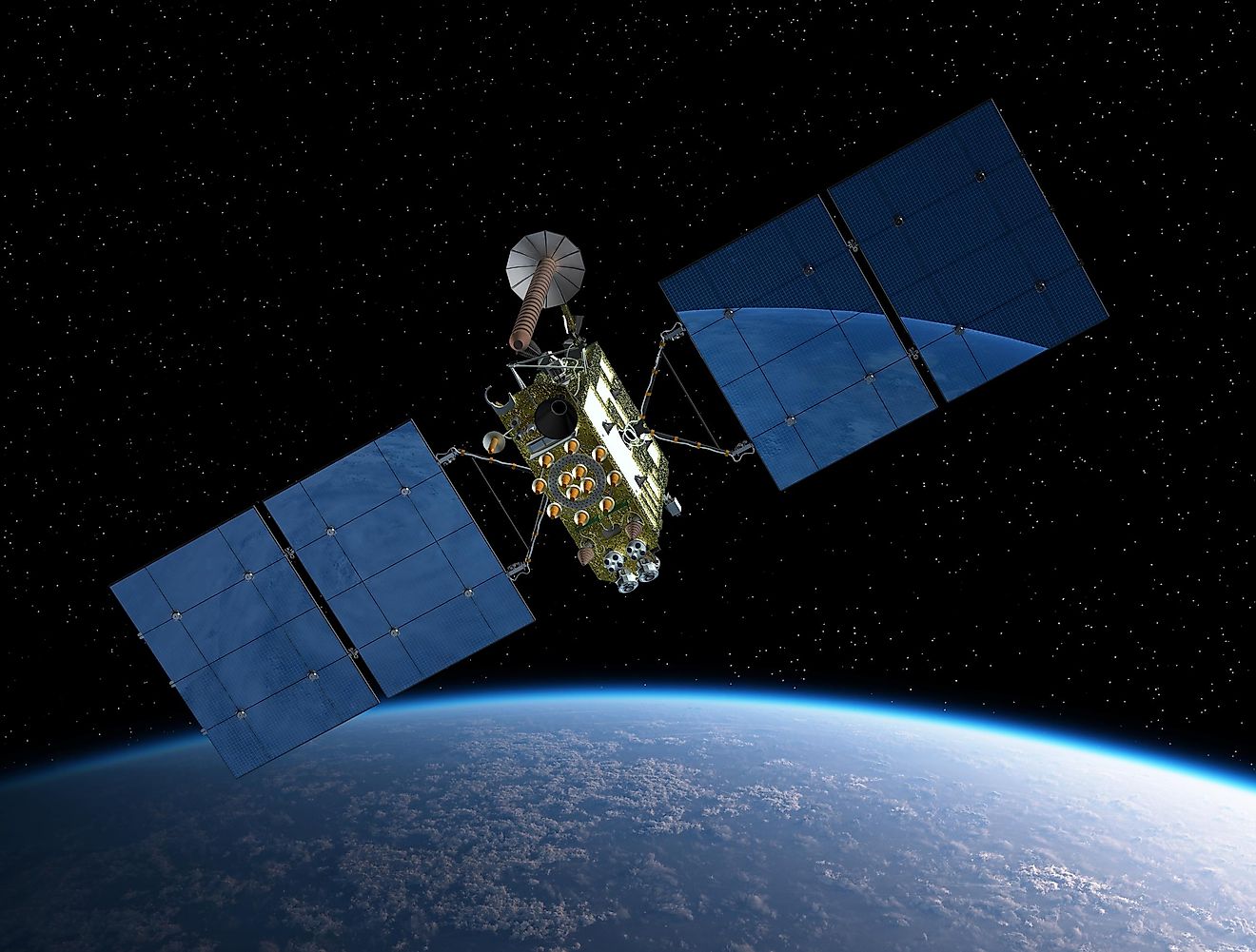
How Far Is Each Planet?
How far each planet is from the sun is a more complicated question than it appears. Each planet is in an elliptical orbit around the sun. This means that the orbits of the planets are oval-shaped, and so at different intervals, the planets will be closer or further from the sun. It can be hard to fully grasp the scale of the solar system. In order to help with this, astronomers started using astronomical units. By having one astronomical unit equal to the average distance between the Earth and the sun, astronomical units (AU) can provide an easier scale to comprehend.
Inner Solar System

Mercury is the closest planet to the sun at an average distance of 35-million miles. The elliptical orbit causes Mercury to get as close to the sun as 29-million miles and as far as 43-million miles. To put this into scale, Mercury is on average 0.387 AU from the sun. This means that Mercury is approximately a third of the way between the sun and Earth.
Venus is the second planet from the sun and the closest planet to Earth. Venus orbits the sun at an average distance of 0.722 AU, equating to 67-million miles on average. The orbit of Venus causes it to drift between 66 to 68-million miles from the sun.
Earth is the third planet from the sun at an average distance of one AU. Scientists base Astronomical Units off the Earth, so one AU is equal to 93-million miles. Also having an elliptical orbit, Earth can be anywhere from 91-million miles from the sun to 94-million miles.
The last planet in the inner solar system is Mars. Orbiting between 127-million miles and 155-million miles, Mars has an average distance of 142-million miles from the sun. At 1.52 AU, Mars is 1.5 times further from the sun than the Earth is.
Outer Solar System

First up in the outer solar system is Jupiter. There is a big jump in distances between Mars and Jupiter, ranging between 460-million to 508-million miles from the sun. On average, Jupiter is 484-million miles from the sun, equating to 5.2 AU. For perspective, this shows that Earth’s orbit could fit between the sun and Jupiter five times.
Saturn is nearly twice as far from the sun as Jupiter is. Ranging between 839-million miles to 938-million miles, Saturn averages at 9.58 AU (889-million miles) from the sun. Earth's orbit could fit inside Saturn's nearly ten times. As we get further from the sun, the planets start to spread out exponentially.
Uranus orbits at an average distance of 1.79-billion miles from the sun. This can also be written as 19.2 AU. Uranus has a major difference in its closest and furthest approach. Its furthest approach is 1.86-billion miles and it only gets as close as 1.71-billion miles.
Neptune is the outermost planet in the solar system. Ranging from 2.77-billion miles to 2.83-billion miles, Neptune has a gigantic orbit. This averages out to 2.8-billion miles from the sun or 30.1 AU.
Average Distance From The Sun In The Solar System
| Planet | Distance From Sun(average) | Astronomical Units From Sun (average) |
|---|---|---|
|
Mercury |
35 million miles |
0.387 AU |
|
Venus |
67 million miles |
0.722 AU |
|
Earth |
93 million miles |
1 AU |
|
Mars |
142 million miles |
1.52 AU |
|
Jupiter |
484 million miles |
5.2 AU |
|
Saturn |
889 million miles |
9.58 AU |
|
Uranus |
1.79 billion miles |
19.2 AU |
|
Neptune |
2.8 billion miles |
30.1 AU |











